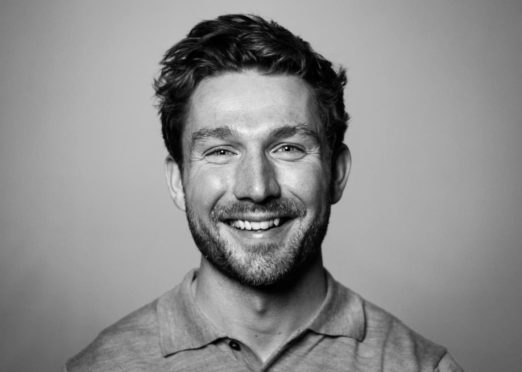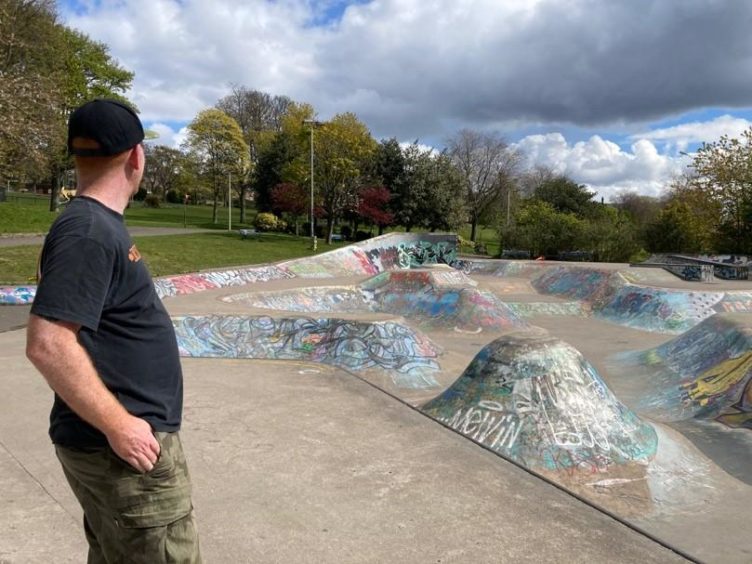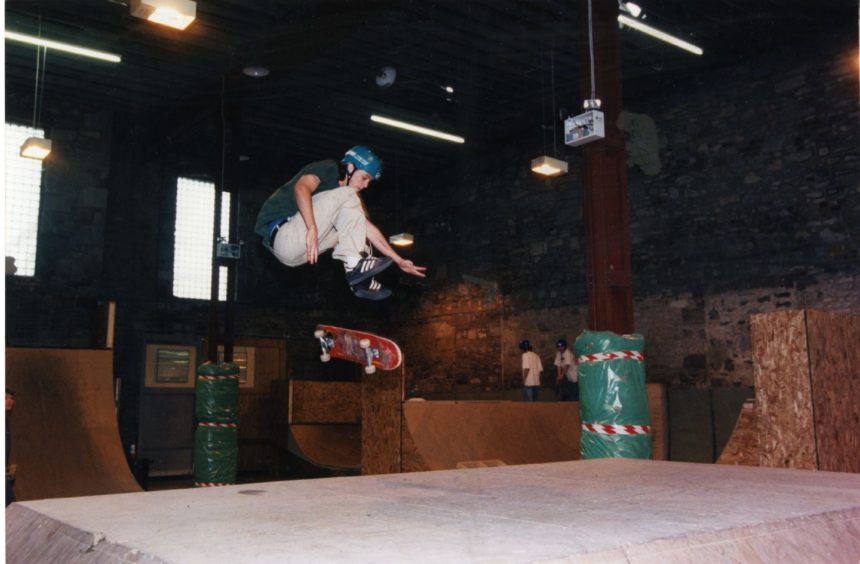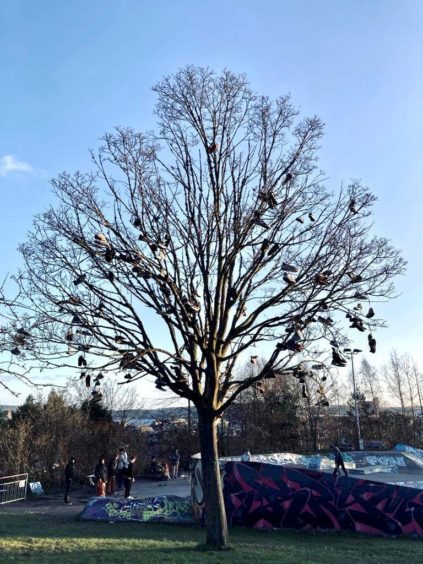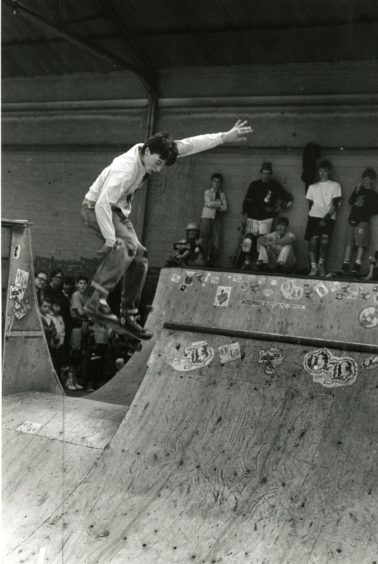The only sign of life I’d sometimes see on my lockdown stravaigs, out fae Coldside and around the city in lockdown was at the Dudhope skatepark.
As the city shivered, grey in its winter frostbit mantle, and most of us cooried up at home with a bevvy, teams of young folk were out practising their art.
Skateboarding – and even its significantly lamer cousin rollerblading – has proven incredibly resilient.
And throughout a pandemic winter of discontent, the skaters kept rolling.
In the late 90s and early 2000s, the city had the soundtrack of the tiny hard wheels scrieving down every street.
The Old Steeple had the vibe of a fortress that had fallen to a debauched invader; its sombre protestant exterior overrun by posses of baggy-jeaned skaters and black clad goths and moshers.
Endless tried and failed kickflips down the steps sent skateboards scattering off into traffic.
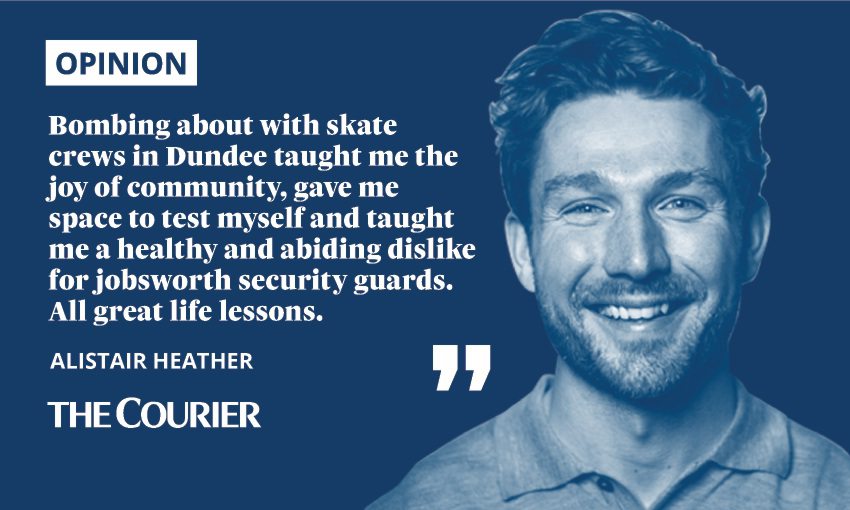
Folk reclaimed dead land in Stobswell and Hawkhill and made spaces to skate, spaces to create. Community groups in Kirkton threw up ramps. Things thrived.
Then came the time when it seemed skating was done for in Dundee. The skate mobs in the centre vanished like snow off a dyke.
The new concrete skate ramps councils threw up too late sat abandoned. Avril Lavigne the skatepunk princess fell out of the music charts.
Even I hung up my rollerblades, never to roll again.
It was the end of a wee radical chapter. A lot of good was done, and many lives enriched in a struggling city through skate.
Bombing about with skate crews in Dundee taught me the joy of community, gave me space to test myself and taught me a healthy and abiding dislike for jobsworth security guards. All great life lessons.
A calling and a cause
Admittedly, there was a lot of drugs done too, and a tremendous amount of bevvy taken.
Taxis got dented by boards flying into the city centre rank. Ninewells likely had a good few additional bones to set over the period.
But overall it had been a positive, radical ecosystem which gave working folk a calling and a cause.
When the scene atrophied, much was lost.
That is why a packed Dudhope gives this auld dud hope. Although things are different now.
On my wintertime walks, I’ve been seeing the skatepark teeming with females – a far cry from the old misogynist sausagefest skate days I remember.
Lassies with board-bruised shins and a rebellious self-belief can only be good.
Workers’ playtime
Fashion has also brought itself to bear upon the scene. But it is still a sport for working folk.
Scotty, for example, skates with a stylish mullet and glistening septum piercing, glinting only marginally less bright than his broad cheery smile.
He’s just out the college and is skating the summer away until he starts his full-time care job.
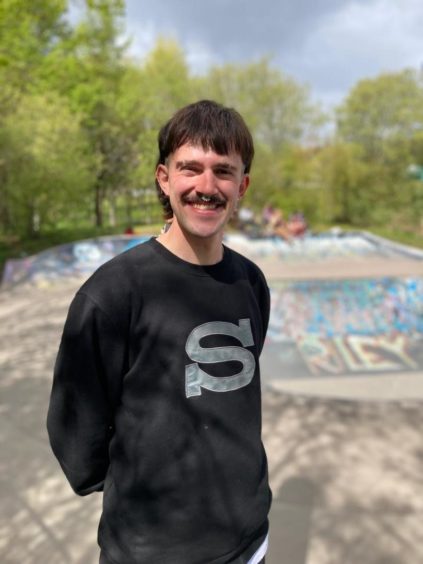
Some guys have skated right through, sticking with the sport as the scene contracted then expanded.
Chatting to these guys – still creaking round the ramps into their 30s – the scene has changed in some ways, but maintained some distinctive aspects.
Dundee remains known for its incredible welcome.
Talk of inclusion is more than a soundbite… Even the city’s least popular residents find solace here
“It doesnae matter what race ye are, or where your fae or that,” one 33 year old said to us. “Everyone’s welcome eh. Dundee’s known for that in the skate scene. Aabdy can just come in and skate. Glasgow’s no like that. Aberdeen’s no. Dundee is.”
The talk of inclusion is more than a soundbite. The concrete sees young Jacob out getting his first dunts as he learns to skate with his dad, rolling his first tentative inches as seasoned shredders tear it up around him.
Even the city’s least popular residents – the incredibly infectious international students in Parker House – find solace here, turning one wee corner into a drinking spot on weekends.
The creativity, albeit with a destructive scunner in it, remains.
The Shoe tree, for example, catches the eye. Every time a pair of trainers gets worn out, the skaters tie the laces together and birl them round a branch.
It’s horrendously anti-nature. But it’s a space being claimed. The graffiti that coats the park, whilst no ayewis bonnie, is a space being claimed creatively.
Dundee was a dump last time skating really boomed, so it made sense for the scene to be countercultural; to be almost at war against an environment that was failing us.
This time, the skate boom is happening against the backdrop of an improving city. And the scene contains within it the aspiration, art, inclusivity and gallusness that we can hope will define whatever society we’re in the middle of creating here.
The V&A recognised the creative potential early, incubating a project that brought a temporary skatepark to the waterfront.
Dudhope’s got life and vibrancy, stubborn enough to thole the harsh lockdown winter.
A new scene, new fashions and new approaches since my day.
But still the same Dundee egalitarian spirit, the same working-class expression, and the same potential to be transformational.
